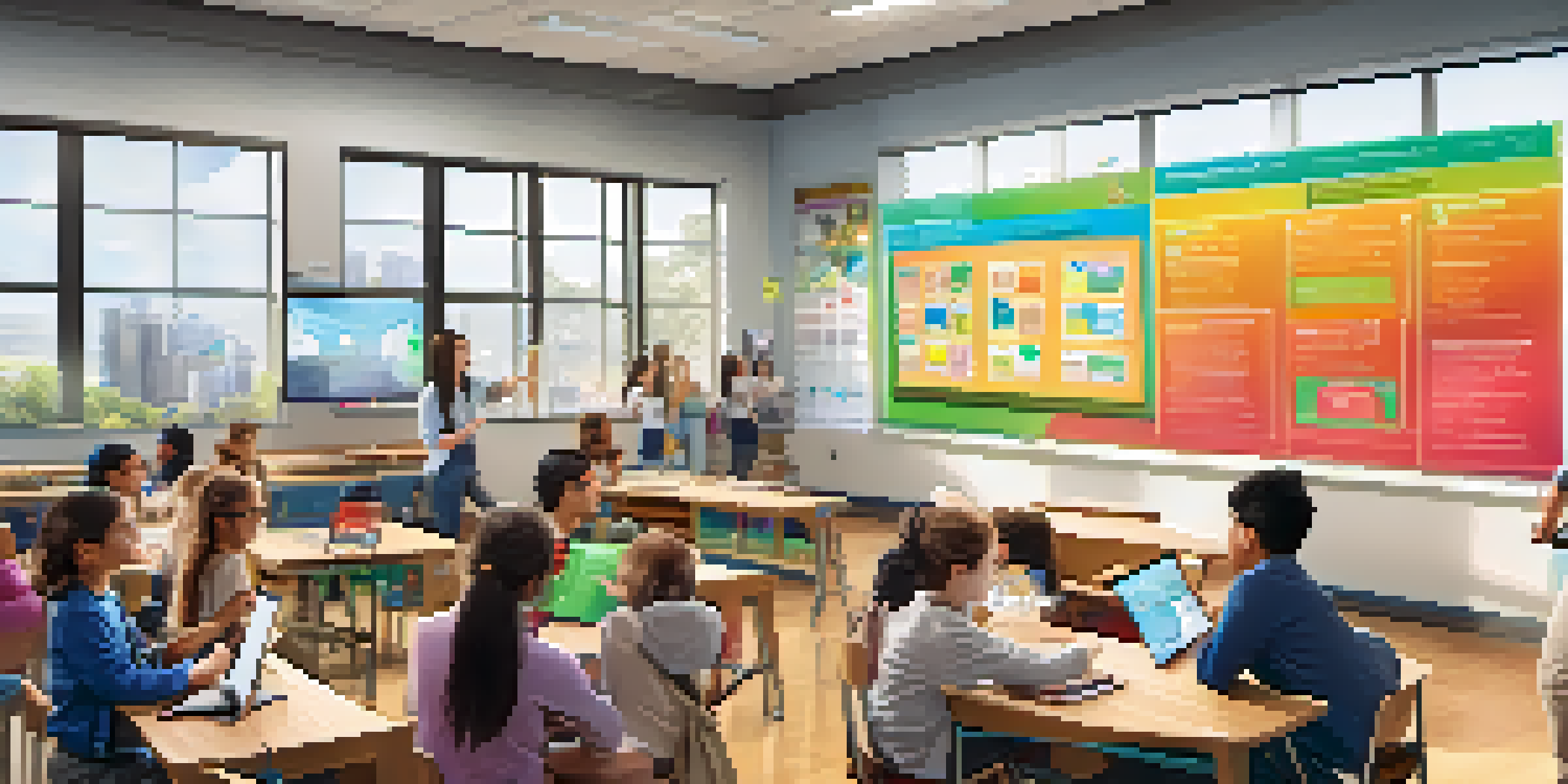Augmented Reality for Teaching Financial Literacy to Students

Understanding Financial Literacy and Its Importance
Financial literacy is the ability to understand and effectively use various financial skills, including personal financial management, budgeting, and investing. This knowledge is crucial for students as they prepare to navigate their financial futures. With the rise of student debt and complex financial products, grasping these concepts early can lead to more informed decision-making down the line.
Financial literacy is not an end in itself but a means to an end. It is the key to unlocking the doors of opportunity in life.
In a world where financial decisions can significantly impact life trajectories, teaching students about money management is more important than ever. Financial literacy equips them with the tools to manage their finances responsibly, avoid debt traps, and make informed investments. Without these skills, young adults may find themselves struggling to cope with financial challenges.
By integrating financial literacy into education, we can empower students to take charge of their finances. This means fostering an environment where they feel confident discussing money matters and making informed choices. That's where innovative approaches like augmented reality come into play.
Introducing Augmented Reality in Education
Augmented reality (AR) overlays digital information onto the real world, creating interactive experiences that can enhance learning. By utilizing AR, educators can bring abstract financial concepts to life, making them more relatable and engaging for students. Imagine a classroom where students can interact with 3D models of financial scenarios, such as budgeting for a trip or investing in stocks.

This technology transforms traditional learning methods, allowing students to visualize complex ideas. For example, an AR app could simulate the impact of interest rates on savings accounts, helping students see the long-term effects of their financial decisions. Such immersive experiences not only capture students' attention but also promote deeper understanding.
Importance of Financial Literacy
Financial literacy equips students with essential skills to manage their finances and make informed decisions.
Moreover, AR tools can cater to different learning styles, ensuring that all students benefit from the lessons. Whether they learn best through visual aids, hands-on activities, or auditory explanations, AR can provide tailored experiences that meet their needs.
Engaging Students with Interactive Financial Scenarios
One of the most effective ways to teach financial literacy is through real-world scenarios. Augmented reality can create immersive simulations where students manage a virtual budget, choose investments, or even run a business. This hands-on approach allows them to experiment with financial decisions in a safe environment, learning from their successes and mistakes.
The ability to earn, save, and invest money wisely is one of the most important skills a person can possess.
For instance, students might engage in a simulation where they must allocate a monthly budget to different expenses, learning to prioritize needs over wants. As they make choices, the AR system can provide instant feedback, guiding them on how well they are managing their finances. This immediate response creates a dynamic learning experience that reinforces their understanding.
By interacting with these scenarios, students are more likely to retain the information and apply it in real life. This practical approach not only enhances their learning but also fosters critical thinking and problem-solving skills, essential traits for navigating the financial world.
Fostering Collaboration Through AR Learning Tools
Augmented reality also encourages collaboration among students, making learning more social and enjoyable. Group activities using AR can facilitate discussions around financial literacy, where students can work together to solve problems. This collaborative element not only enhances understanding but also promotes teamwork, a critical skill for future success.
For example, students could participate in a group project where they create a financial plan for a hypothetical business using AR tools. They can explore different financial scenarios together, discussing the implications of their choices. Such collaboration prepares them for real-world situations where teamwork is essential.
AR Enhances Learning Engagement
Augmented reality brings financial concepts to life, making them more relatable and engaging for students.
Additionally, AR can connect students with financial experts through virtual guest appearances or workshops. This exposure allows them to learn from professionals, further enriching their understanding of financial concepts and practices.
Addressing Different Learning Styles with AR
Every student has a unique learning style, and augmented reality can accommodate these differences effectively. Some students may thrive in visual environments, while others may prefer auditory or kinesthetic learning. AR provides a versatile platform that can adapt to various preferences, ensuring that all students engage with the material.
For instance, an AR app can combine visual elements, like graphs and charts, with auditory explanations to cater to diverse learners. Students who struggle with traditional teaching methods may find that AR enhances their understanding and retention of financial concepts. This adaptability makes financial literacy more accessible to everyone.
By meeting students where they are, AR fosters a more inclusive learning environment. This approach not only enhances knowledge retention but also empowers students to take ownership of their learning experience.
Measuring the Success of AR in Financial Education
To determine the effectiveness of augmented reality in teaching financial literacy, it's essential to measure student outcomes. Educators can assess knowledge retention, engagement levels, and overall satisfaction with the learning experience. These metrics provide valuable insights into how well AR tools are working and where improvements can be made.
For example, pre- and post-lesson quizzes can help gauge changes in students' understanding of financial concepts. Additionally, feedback surveys can offer clues on how students perceive their learning journey with AR. By continuously evaluating these factors, educators can refine their approach and maximize the benefits of AR.
Collaborative Learning with AR
AR fosters collaboration among students, enhancing their understanding and teamwork skills through interactive scenarios.
Moreover, success stories from students who have gained confidence in managing their finances through AR can inspire further integration of this technology in classrooms. Sharing these positive outcomes can encourage more educators to embrace augmented reality as a powerful teaching tool.
The Future of Financial Literacy Education with AR
As technology continues to evolve, the potential for augmented reality to enhance financial literacy education is vast. With advancements in AR applications and accessibility, more students can benefit from this innovative learning method. The future of financial education lies in blending traditional teaching with cutting-edge technology to create engaging and effective learning experiences.
Educators can stay ahead of the curve by continuously exploring new AR tools and resources. Collaborating with tech developers can lead to tailored solutions that address the specific needs of financial literacy education. This partnership can foster a creative learning environment where students are excited to engage with financial concepts.

Ultimately, the integration of augmented reality into financial literacy education can help prepare students for a financially savvy future. By equipping them with essential skills and knowledge, we can empower the next generation to navigate the complexities of personal finance confidently.